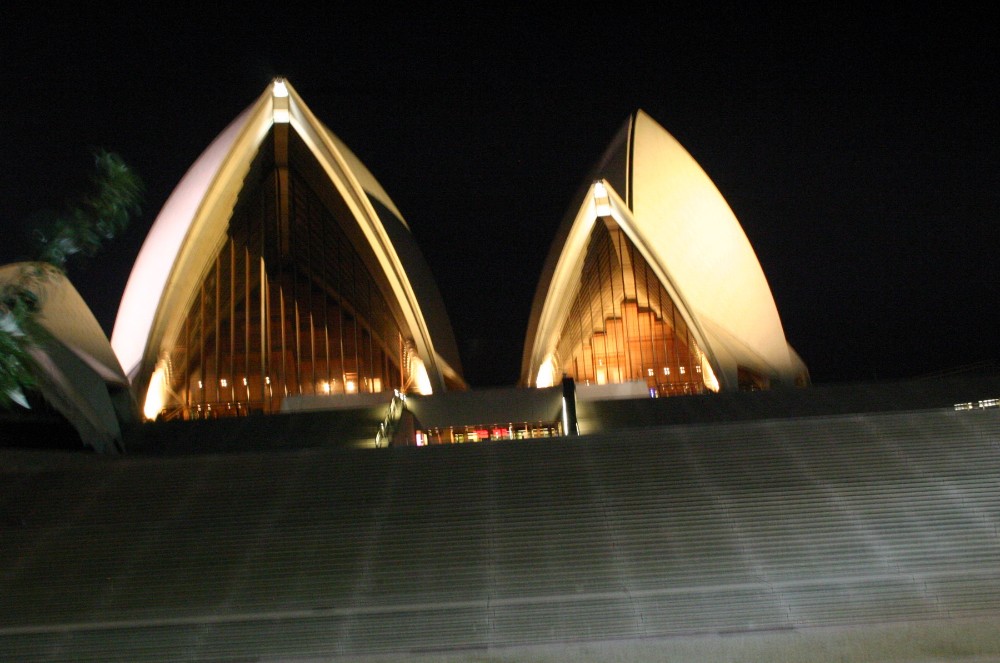Date: During my 2007-06-03 to 2007-06-10 trip to Sydney, Australis
The Sydney Opera House is a multi-venue performing arts centre in Sydney, New South Wales, Australia. It was conceived and largely built by Danisharchitect Jørn Utzon, opening in 1973 after a long gestation that had begun with his competition-winning design in 1957. Joseph Cahill's New South Wales Government gave the go-ahead for work to begin in 1958. The government's bold decision to select Utzon's design is often overshadowed by the scandal that followed.
The Sydney Opera House was made a UNESCO World Heritage Site on 28 June 2007 It is one of the 20th century's most distinctive buildings and one of the most famous performing arts centres in the world.
The Sydney Opera House is on Bennelong Point in Sydney Harbour, close to the Sydney Harbour Bridge. It sits at the northeastern tip of the Sydney central business district (the CBD), surrounded on three sides by the harbour (Sydney Cove and Farm Cove) and inland by the Royal Botanic Gardens.
Contrary to its name, the building houses multiple performance venues. The Sydney Opera House is among the busiest performing arts centres in the world, hosting over 1,500 performances each year attended by some 1.2 million people. It provides a venue for many performing-arts companies, including the four key resident companies Opera Australia, The Australian Ballet, the Sydney Theatre Company and the Sydney Symphony Orchestra, and presents a wide range of productions on its own account. It is also one of the most popular visitor attractions in Australia, with more than seven million people visiting the site each year, 300,000 of whom take a guided tour.
The Sydney Opera House is a modern expressionist design, with a series of large precast concrete "shells", each composed of sections of a sphere of 75.2 metres (246 ft 8.6 in) radius, forming the roofs of the structure, set on a monumental podium. The building covers 1.8 hectares (4.4 acres) of land and is 183 m (600 ft) long and 120 m (394 ft) wide at its widest point. It is supported on 588 concrete piers sunk as much as 25 m (82 ft) below sea level.
Although the roof structures of the Sydney Opera House are commonly referred to as "shells" (as they are in this article), they are in fact not shells in a strictly structural sense, but are instead precast concrete panels supported by precast concrete ribs. The shells are covered in a subtle chevron pattern with 1,056,006 glossy white- and matte-cream-coloured Swedish-made tiles from Höganäs AB, a factory that generally produced stoneware tiles for the paper-mill industry. though, from a distance, the shells appear a uniform white.
The appearance tells us it is unique. There are 3 Shells - Restaurant, Symphony Hall and Opera House. To get there is simple, just take CityRail and get off at Circular Quay. then walk toward the destination. We did shoot photos on our 3 ferry rides and 1 special evening visit.















































No comments:
Post a Comment